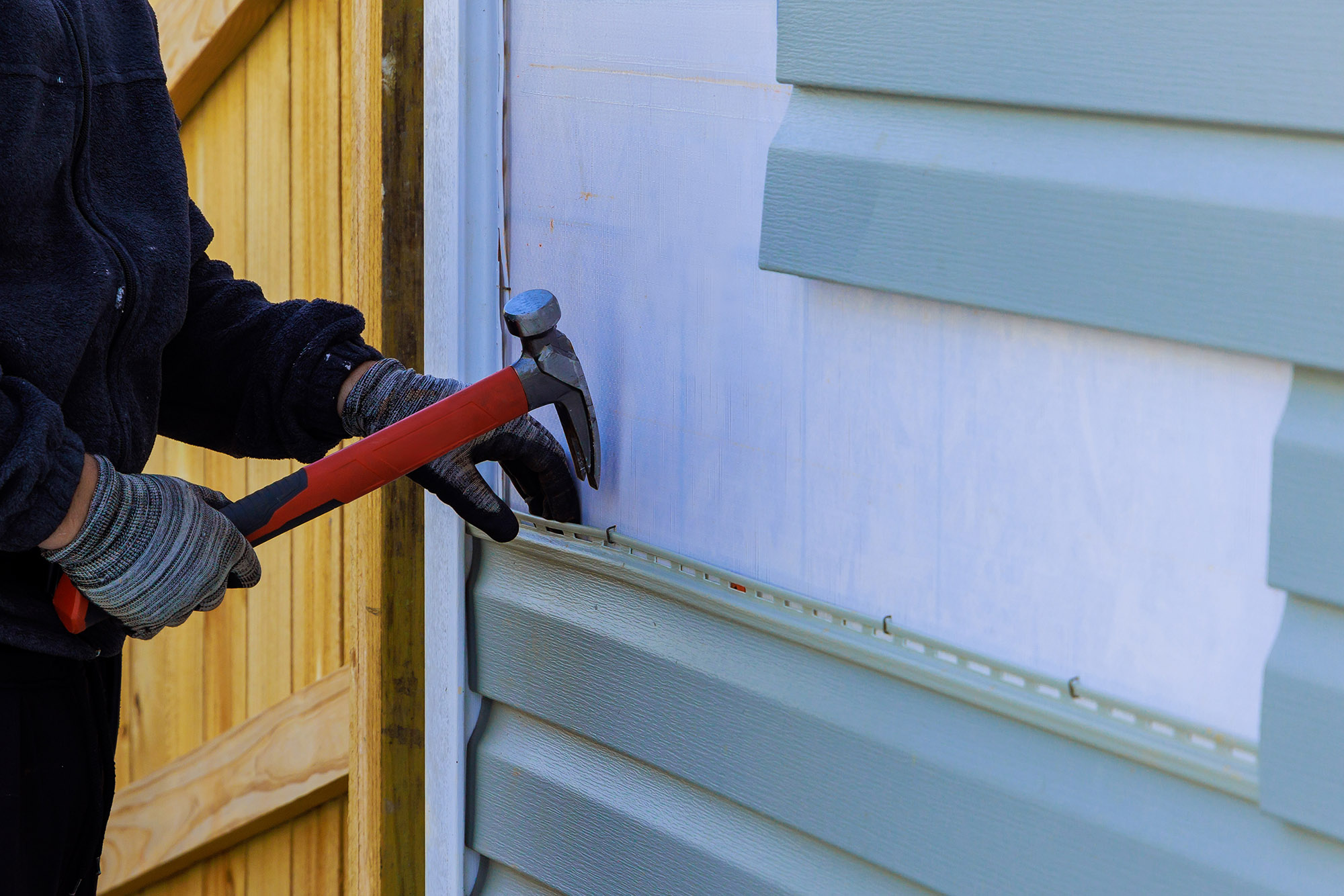
When it comes to maintaining the exterior of your home, one of the most critical aspects is ensuring that your siding is in good condition. Siding not only enhances the curb appeal of your house but also protects it from the elements. Over time, however, siding can become damaged due to weather, pests, or accidents. Knowing how to repair siding on a house can save you money and keep your home looking great. In this comprehensive guide, we’ll walk you through the steps to effectively repair your siding, ensuring a durable and attractive finish. For expert assistance, High Point Roofing is always here to help.
Why Siding Repair is Important
Before diving into the repair process, it’s essential to understand why maintaining your siding is crucial:
-
Protection from Elements: Siding acts as a barrier against harsh weather conditions, such as rain, snow, and wind. Damaged siding can lead to water infiltration and subsequent damage to your home’s structure.
-
Energy Efficiency: Properly installed and maintained siding can improve your home’s insulation, reducing energy costs by keeping your house warm in winter and cool in summer.
-
Aesthetic Appeal: Cracked or damaged siding can make your home look unkempt. Repairing siding enhances your home’s appearance and increases its value.
Tools and Materials Needed
Before you start the repair process, gather the necessary tools and materials. Here’s a list of what you’ll need:
- Replacement siding panels
- Pry bar
- Hammer
- Nails or screws (depending on siding type)
- Circular saw or utility knife
- Measuring tape
- Level
- Caulk and caulking gun
- Paint (if required)
- Safety glasses and gloves
Step-by-Step Guide to Siding House Repair
Step 1: Assess the Damage
The first step in any repair project is to assess the extent of the damage. Walk around your house and inspect the siding for cracks, holes, warping, or loose panels. Determine whether the damage is localized or if it affects a larger area.
Step 2: Remove the Damaged Siding
Once you’ve identified the damaged areas, use a pry bar to carefully remove the affected siding panels. Start from the bottom and work your way up, gently prying the panels loose. Be cautious not to damage the surrounding siding.
Step 3: Measure and Cut Replacement Panels
Measure the area where you need to install the new siding. Use a circular saw or utility knife to cut the replacement panels to the appropriate size. It’s important to measure accurately to ensure a snug fit.
Step 4: Install the New Siding
Position the new siding panels in place, starting from the bottom and working your way up. Use nails or screws to secure the panels, ensuring they are level and properly aligned with the existing siding. Leave a small gap between panels to allow for expansion and contraction due to temperature changes.
Step 5: Seal and Caulk
Once the new siding is in place, use a caulking gun to apply caulk around the edges of the panels. This will help seal any gaps and prevent water infiltration. Make sure to use a high-quality, weather-resistant caulk.
Step 6: Paint (if necessary)
If your siding is painted, you may need to paint the new panels to match the existing color. Choose a high-quality exterior paint and apply it evenly for a seamless finish.
Step 7: Final Inspection
After completing the repair, conduct a final inspection to ensure all panels are secure and the caulking is properly applied. Check for any gaps or loose areas that may need additional attention.
Common Siding Repair Issues and Solutions
Cracked or Split Siding
Cracks and splits are common issues with siding, especially in areas exposed to extreme weather. To fix this, you can use a siding repair kit or epoxy filler to seal the cracks. After the filler dries, sand it smooth and paint over it to match the surrounding siding.
Warped Siding
Warped siding is usually caused by excessive moisture or heat. To address this, you’ll need to replace the warped panels. Ensure proper ventilation and insulation in your home to prevent future warping.
Loose Siding Panels
Loose panels can occur due to improper installation or strong winds. Reattach loose panels using nails or screws, making sure they are properly aligned with the rest of the siding.
Mold and Mildew
Mold and mildew growth on siding is often a result of poor drainage or lack of sunlight. Clean the affected area with a mixture of water and bleach, then rinse thoroughly. To prevent recurrence, improve drainage around your home and trim back any overhanging branches that block sunlight.
When to Call the Professionals
While DIY siding repairs can be effective for minor issues, some situations require professional intervention. Consider calling a professional siding contractor like High Point Roofing if:
- The damage covers a large area or multiple panels.
- You’re unsure about the type of siding or repair techniques needed.
- You lack the necessary tools or experience for the repair.
- The siding repair involves working at heights or in hard-to-reach areas.
Preventive Maintenance Tips
To extend the lifespan of your siding and minimize the need for repairs, follow these preventive maintenance tips:
- Regular Inspections: Inspect your siding at least twice a year for signs of damage or wear.
- Clean Your Siding: Use a garden hose and mild detergent to clean your siding and remove dirt, mold, and mildew.
- Trim Vegetation: Keep trees and shrubs trimmed away from your siding to prevent damage and allow for proper ventilation.
- Maintain Gutters: Ensure your gutters are clean and functioning properly to prevent water from seeping behind the siding.
- Address Issues Promptly: Repair any damage as soon as it’s detected to prevent further deterioration.
Conclusion
Repairing siding on a house is a manageable task that can significantly enhance the appearance and protection of your home. By following the steps outlined in this guide, you can address common siding issues and maintain the integrity of your home’s exterior. However, for extensive repairs or if you’re unsure about the process, it’s always best to consult with a professional. High Point Roofing is here to provide expert siding repair services, ensuring your home remains beautiful and well-protected for years to come. Contact us today for a consultation and let us help you keep your home in top condition.



